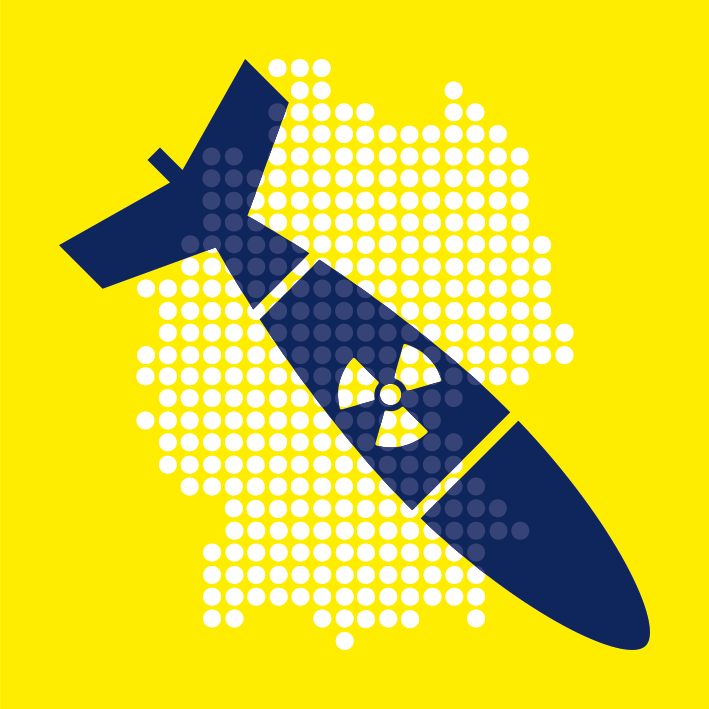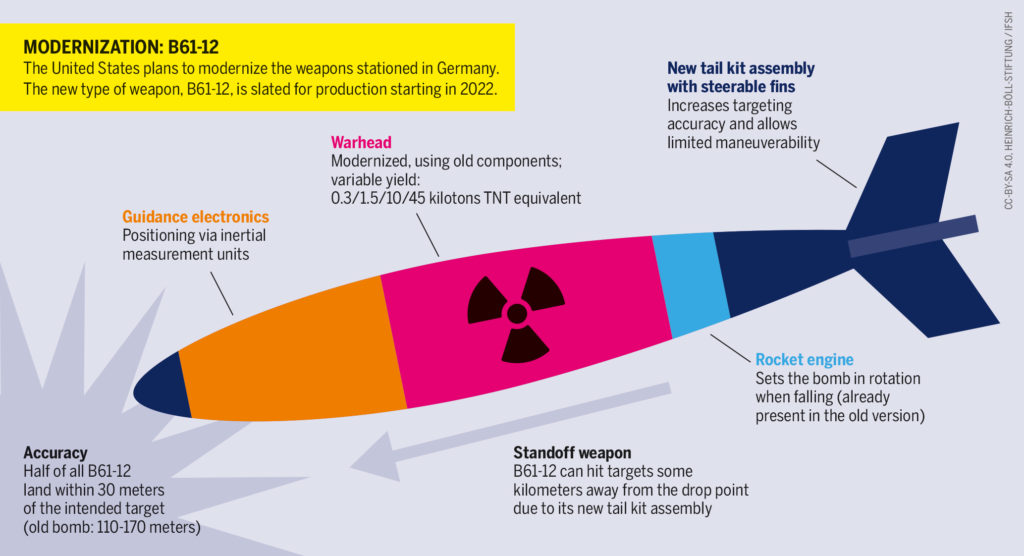
The nuclear weapons deployed in Germany are gravity bombs. Aircraft transport weapons of this type to their target, where they fall to the ground without propulsion after release. Current US bombs in Germany are of the types B61-3 and B61-4. Both types were produced from 1979 to 1989 and are among the longest-serving nuclear weapons in the US arsenal. All B61 bombs are thermonuclear weapons (“hydrogen bombs”), i.e., they combine nuclear fission and nuclear fusion. The B61-3 has a variable yield of 0.3/1.5/60/170 kilotons TNT equivalent (kt), the B61-4 of 0.3/1.5/10/45 kt. To compare, the weapon that reduced Hiroshima to rubble in 1945 had a yield of 13 kt and was based solely on nuclear fission.

US nuclear weapons laboratories currently modernize the gravity bombs to the type B61-12. The program officially aims to extend the service life of the weapons. Several new components (see graphic) will also enhance the performance profile of the bomb, however, making the result more of an upgrade. The B61-12 will offer a choice of four yields corresponding to the yields of the B61-4. A tail kit with movable fins and an electronic guidance system will increase target accuracy. The technology will also give the weapon “standoff” capability, i.e., the ability to be maneuvered slightly away from the drop point while falling. The start of production is currently delayed to at least 2022 due to issues with components. Subsequently, the nuclear weapons in Germany are to be exchanged. The United States will bear the modernization costs.
The B61 bombs currently stored in Büchel are protected against unauthorized use by special security measures. They can only be activated after entering a twelve-character password (“Permissive Action Link”). In addition, the nuclear weapons are protected against accidents. The weapons make use of so-called “insensitive” conventional explosives, i.e., they do not explode even at high temperatures (e.g., fire) or under mechanical influence. However, the B61 nuclear weapons do not have fire-resistant pits, hence in the event of a fire,contamination with highly toxic substances such as plutonium cannot be ruled out. Fire-resistant pits are common in many other US nuclear weapons.